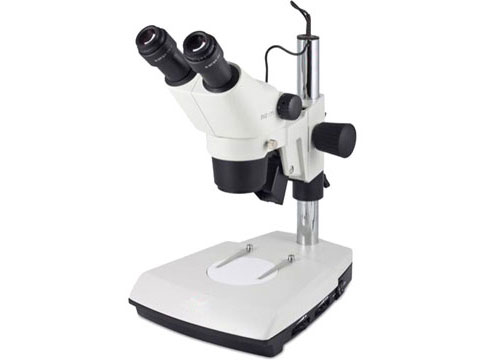High-quality stereo microscopes with many options like photography, polarization, special stands, X-Y tables, various light sources, etc.
- Stereo microscope uses light that is reflected back from an object.
- Stereo microscope light source is external
-the images seen are three-dimensional images rather than flat images.
Due to their ability to view three-dimensional structures, stereo microscopes can be used in a variety of applications:Watchmaking,Pathology,Surgery,Paleontology,Biological research,Entomology,Botany.
Can be understood by the stereo microscope:
-cracks
-flaws
-discoloration
-brittle/ductile
-grooves
There are two main types of magnification systems in stereo microscopes. One type is permanent magnification in which initial magnification is achieved by a pair set of objective lenses with a defined magnification degree. The second is a pancreatic zoom or magnification, capable of a continuously varying degree of magnification over a defined range.
 .
.
4 main questions to ask before choosing a Stereo Microscope
1. What is the app?
• filtering and sorting?
• Is there a need to manipulate the sample?
• Is documentation needed?
2. What things should be expected, documented or illustrated?
How many different people should use a microscope?
3.• How many hours will they work under the microscope?
Who work long hours with a microscope, ergonomic accessories can help prevent injuries.
4. What is the budget available for a microscope?
5 Key Factors to Consider When Choosing a Stereo Microscope
1. Zoom range, magnification, object field (field of view) and working distance
2. Depth of field and numerical key (NA)
3. Optical quality
4. Ergonomics
5. Lighting
Stereo Microscopes by MOTIC
-MOTIC is one of the five leading manufacturers of microscopy in the world,
- MOTIC has gained widespread recognition for its high-quality optics, optical precision and innovative technology.
Combined with digital microscope cameras and extensive lighting options allow for proper adjustment for any use.
--MOTIC microscopes work in research institutions that require measurement and analysis of morphology or appearance in a variety of materials such as metal alloys, semiconductors, glass and ceramics, rubber plastics and polymers.
- A wide range of types of optics offer extremely high color fidelity, accuracy, contrast, sharpness, gloss and high resolution even at long working distances.